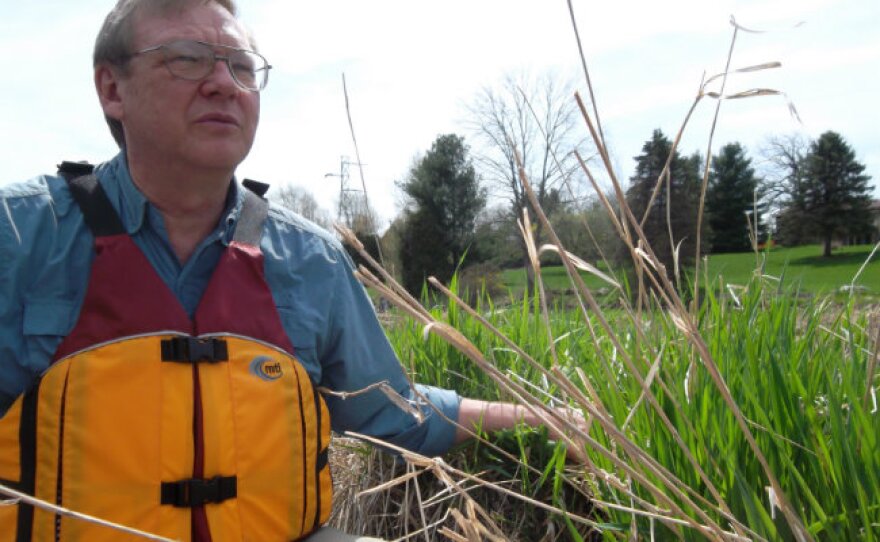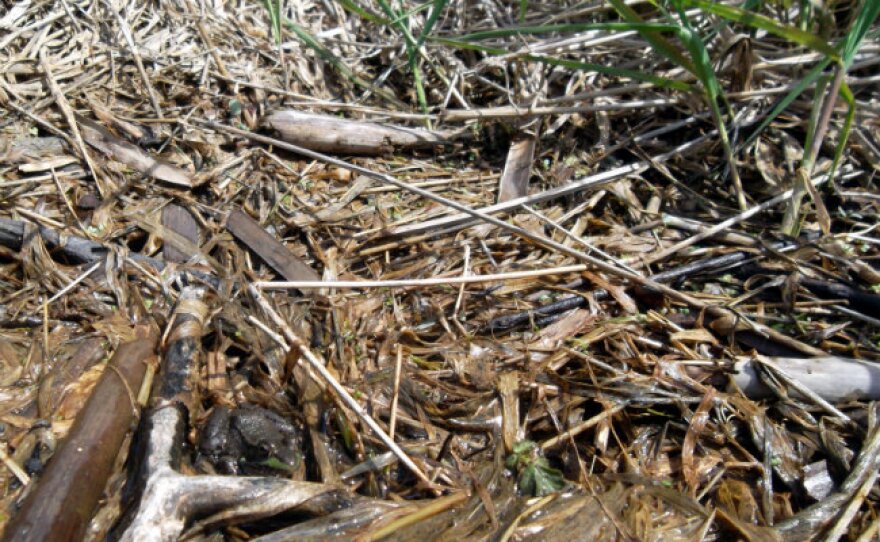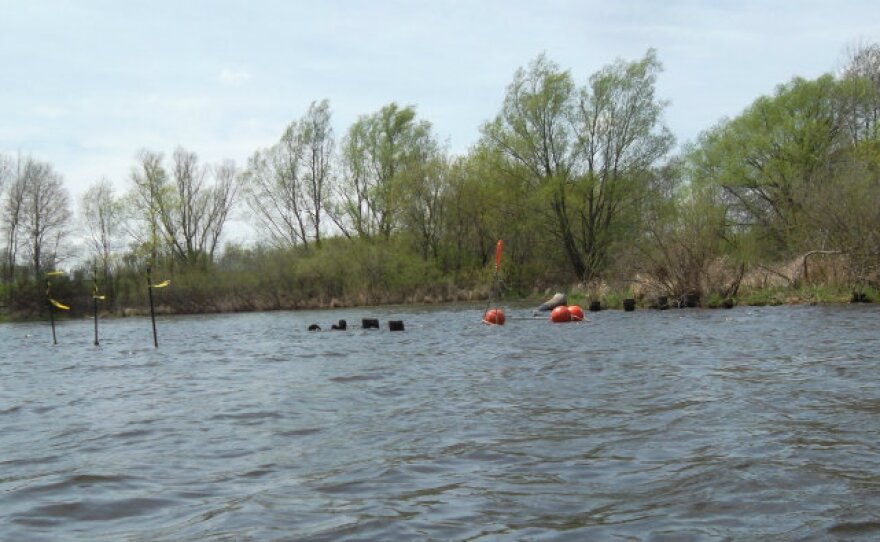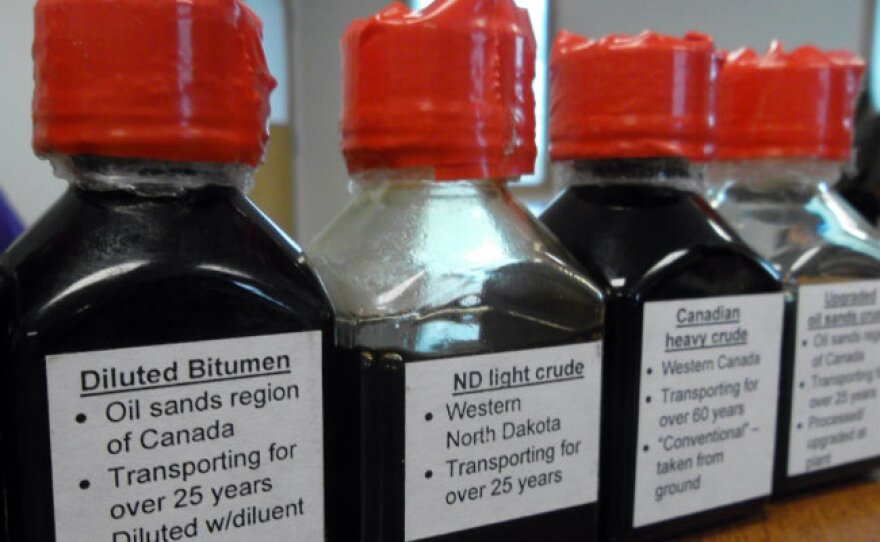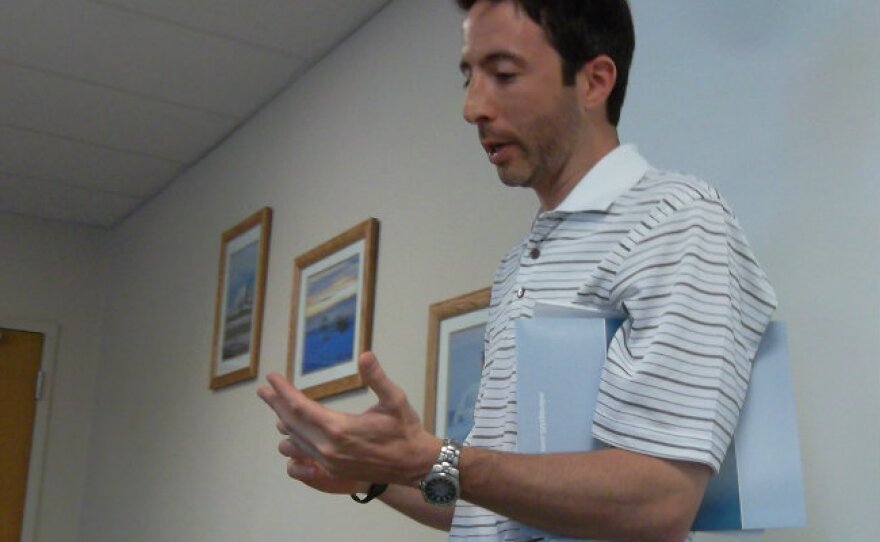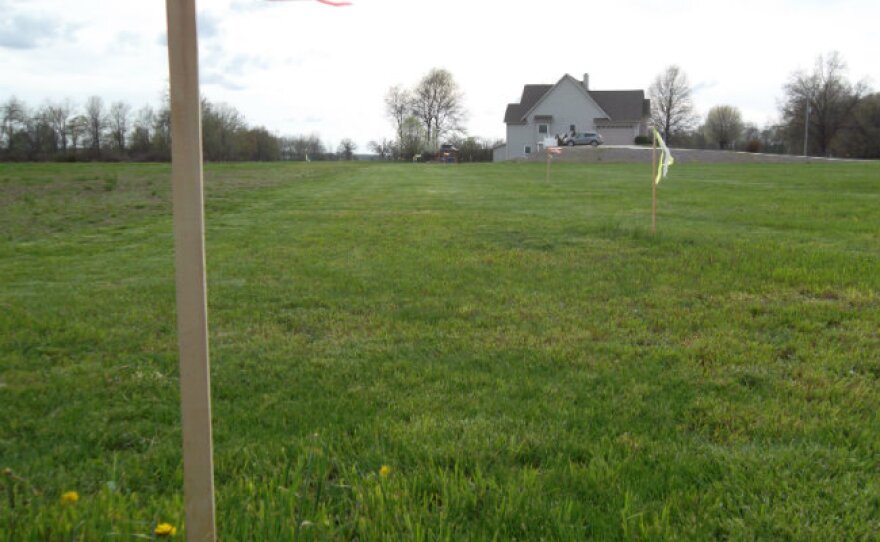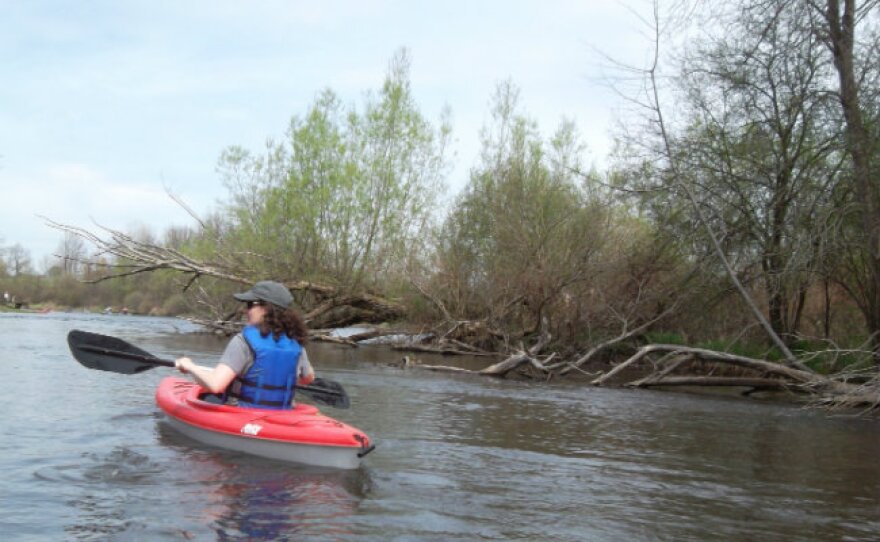Three years ago today, an underground pipeline carrying tar sands oil to refineries near Detroit ruptured near Marshall, Michigan. The break went undetected overnight, allowing hundreds of thousands of gallons of thick oil to seep into the Kalamazoo River.
On July 26, 2010, a call came into Jay Wesley’s office in Plainwell that there’d been an oil spill.
“We expected to see an overturned truck or something like that. That’s typically what our spills are like here, very minor,” he says.
Wesley and some of his co-workers at the Department of Natural Resources’ Fishery Division loaded into trucks and headed towards Marshall.
“My first stop was actually at this bridge and you could definitely tell it wasn’t an overturned truck. Half the river was black.”
Over the past three years, more than a million gallons of oil have been removed from the river.
Standing only three miles from where the pipeline burst, Wesley says he’s impressed how quickly nature has bounced back here.
“It definitely amazes me. It was totally devastating to see it in the first weeks and months after the spill because there was visible oil everywhere. To now -- when you canoe it you probably will hardly even tell. And the fish communities are still there, the bugs are coming back, the turtles are still there. So it does show that it is a resilient system and it does heal itself over time,” says Wesley.
While the river looks much better, Wesley says it’ll be many more years before the agency can measure the full impact on fish and other animals’ reproductive cycles. Some of the older trees that had to be removed could take decades to regrow, he said.
You can’t see any obvious signs of an oil spill from on shore. But federal regulators estimate there’s still more than 100,000 gallonsof oil on the river bottom.
"We had plans for tornadoes and even terrorists, but we never had a plan for an oil release."
So I loaded up in a canoe with Paul Makowski to see if we could find any. Makowski is with the Calhoun County Health Department.
Makowski lands the canoe every so often, and sticks an oar deep to the bottom to see if we can get any light blue oily sheen to float to top of the water.
It took about an hour, but in a quiet bend just upstream of Ceresco Dam...
“Find anything? Sheen! Hey Steve, got a lot of sheen here.”
http://www.youtube.com/watch?v=pSs73F2rqM0&feature=youtu.be
The sheen is thin and disappears within seconds. This is one of the areas where federal regulators have ordered Enbridgeto dredge up the river bottom to remove the flecks of tar sands oil that are mixed in with the river sediment.
Regulators say the dredging will remove at least 12,000 gallons of oil. The rest of the oil will slowly get removed with sediment traps over time – or it’ll stay where it is.
Not everyone is happy with the details of the dredging plans. A public hearing on plans to dredge in Comstock Township tonight was moved to the Comstock Community Auditoriumto accommodate what’s expected to be a big crowd.
Enbridge will need to get several permits from Michigan's Department of Environmental Quality to complete the work by the December 2013 deadline set by the EPA.
Enbridge spokesman Jason Manshum says it has cost the company almost $1 billion to clean up the spill so far. He says the company's goal "has been and always will be" zero incidents with it's pipelines.
“You know, I would love to say that we have done the following ten items that will ensure there are no leaks again. I would love to tell you that. But I can’t. We’re dealing with mechanical equipment and any time you deal with mechanical equipment there’s a chance for some sort of failure,” says Manshum.
Manshum says a new, bigger pipeline Enbridge is constructing will have better safety functions than the old pipeline that broke. He says that’ll minimize the risk of a leak happening again.
There’s been some resistance to Enbridge’s new pipeline, including arrests of protestors earlier this week and a guy who crawled in one of Enbridge’s pipelines last month.
This story was made possible in part by a fellowship from the Institutes for Journalism & Natural Resources.

